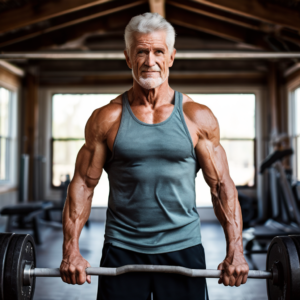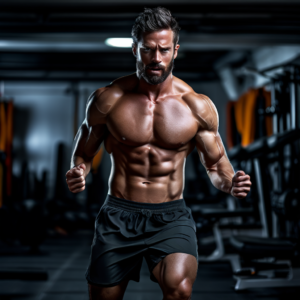You wanna get bendy and not so squirrelly in the head? It ain’t about doing some fancy circus act, it’s about a slow unfurling, like a flower opening, maybe one that’s been squished in a book for too long.
Yoga, with its poses and mindful huffing and puffing, it’s a way to touch your toes and not lose your mind in the process. They say it can knock the stress right out of you.
Thirty, forty percent less anxious, according to some folks over at the Yoga Alliance.
It’s not a magic trick, just a chat with your body, a dance with your thoughts, maybe you’ll step on its toes a few times, who knows?
Think of your body like a map, right? Each muscle, each joint, a landmark telling a tale of bad habits, tension and all that.
Yoga helps you read this map, not like you are looking for a problem, but a guide to understanding your own body.
It’s about saying, “yeah, my hamstrings feel like a rusty hinge,” that’s a starting point, not the end of the world.
It’s like tuning a guitar, you don’t bash the strings, you adjust them, until they sound right.
You go to the edge, not like a bull in a china shop, but like a cat, being very curious. And this means:
- Checking your body: Where’s the tension? Where do you feel like a block of wood?
- Knowing your limits: Bad knees, lifestyle, maybe your grandpa was stiff, all that matters.
- Moving like a thinking man: Each pose is a chat, not a wrestling match.
Poses ain’t just about stretching, they’re tools, like a wrench for the body, used to lengthen the muscles.
It’s about not pulling, but creating room, like coaxing a cat out from under the bed.
They’re also designed to improve what’s going on inside that big noggin of yours. Think of it like this:
* Small steps, not big leaps, get you flexible. Like walking across a balance beam, take your time.
* The body adjusts slowly, like an old man getting out of his chair.
* More blood pumping helps the muscles get bendy and less breakable, not that you are gonna try and break them.
Now, your breath, that’s your partner, like a sidekick, it makes your stretches better and it calms your mind. Like the wind in the sails, pushing you forward. You breath deep to make space in the body. A full breath is like opening a door to loosen up.
It’s more than just breathing, it’s like giving your muscles a massage, each inhale making room, each exhale letting go, and each movement goes with the breath. When you do this, you’re:
- Calming your nerves: Deep breaths, like a shot of whiskey for the soul.
- Releasing muscle knots: Breathing tells the body it’s time to chill.
- Stretching deeper: Each exhale helps you sink into the pose, like sinking into a comfy chair.
Some basic poses to get bendy include:
- Downward Dog: Lengthens the back, those hamstrings, calves and spine too.
- Triangle Pose: Opens up your hips and stretches the sides of the body, feeling like a greek statue.
- Seated Forward Fold: Lengthens the hamstrings and back, bending from the hips, not the waist, unless you want to look like a broken hinge.
- Pigeon Pose: Opens up those hips and groin, if they need opening.
- Cobra Pose: Stretches the chest and front, also a gentle backbend, feeling like a cobra.
Yoga’s also about getting your mind clear, like polishing a dirty mirror, so you can see things clearly, including yourself.
Not to escape from the world, but to look at it without the haze.
The poses keep your mind busy, pulling you away from your wandering thoughts. When your mind is present, it’s:
- More aware of what your thinking, feeling like your watching it from afar.
- You can think about feelings without overthinking them.
- Less reactive to stress, like you can take a punch, or more appropriately a problem.
Meditation and mindfulness, are part of this process.
Meditation, like watching birds in the sky, observe your thoughts without being a part of them.
Mindfulness, like smelling the coffee in the morning, is about being in the moment, each breath.
It helps you to not be controlled by your thoughts, and helps you to steer your mind and not be bogged down by the anxious thoughts. Which means you can:
- Watch thoughts go by like leaves in a stream.
- Appreciate the small things, like a good cup of coffee.
- React less to stress, and more like a calm man.
Yoga also helps with sleep and feeling good overall.
By slowing things down with breathing and movement, you can get to a place of calm.
Like building up a muscle, the more you do it the stronger you become.
So, you gotta be consistent to build mental strength, just like physical. So specific things that help are:
* Breathwork: Techniques like Ujjayi and alternate nostril breathing, calms the mind and reduces anxiety.
* Guided Meditation: Like having someone give you a tour of your mind, if its getting messy.
* Visualization: Helps to focus and calm anxiety through imagined scenes and scenarios, not that this is an escape.
* Mantra Chanting: Focuses the mind through repeating sounds, creating calm, like a hum.
* Relaxing Poses: Deep relaxation, letting the body be at rest, like being on a beach.
Different yoga types, it’s like different tools in a toolbox. Find the right fit for you.
Hatha for the basics, Vinyasa for the flow, or Yin for a meditative approach.
Sun Salutations to warm up, forward folds for the hamstrings.
Adding hip openers, if you need them for your lower back, and backbends to get stronger.
Its all about building a body that is strong and flexible.
For mental clarity, using things like breathing techniques, guided meditations, and visualizations, will help. There are tons of ways you can calm the mind.
Last thing, bring what you learned to your life, start small, listen to your body, and be regular. Create room in your life for yoga. Consistency, not how hard you go, that’s the key.
Choose a practice that works for you, different poses and techniques, find your spot.
You can attend classes, go online, or do it at home.
Remember this is a journey, not a race, and consistency is the key.
The Physical Path to Flexibility Through Yoga

Yoga, at its core, is about finding balance, not just on the mat but within yourself.
It’s a journey, a slow burn towards understanding the body.
We often think of flexibility as something you’re born with, but that’s just not the whole story.
It’s more about consistent effort, about nudging the body little by little, day by day.
It’s about showing up, even when you feel stiff and awkward, and trusting the process.
There’s no rush, just the steady work of moving and breathing.
It’s not just about bending and stretching, though.
It’s about understanding the limits of your own body, respecting those boundaries, and then gently, patiently, working to expand them.
It’s about building a dialogue between your mind and your muscles, finding the edge, and breathing into it. It’s a conversation, not a battle.
This isn’t just exercise, it’s a practice in self-awareness.
Understanding the Body’s Limitations
The body, it’s a stubborn thing sometimes.
It holds onto tension, habits, and limitations like they’re old friends.
Understanding these limitations isn’t about giving up, it’s about knowing your starting point.
It’s about recognizing that tightness in your hamstrings, that stiffness in your back, it’s not a personal failing, it’s just where you are.
We each have our own unique set of restrictions, past injuries, genetic predispositions, and lifestyle choices all play a part. The key is not to fight it but to understand it.
It’s about listening to the whispers of the body, the subtle signals it sends, telling you when to push and when to back off.
These limitations manifest differently in each of us.
One person might struggle to touch their toes, while another finds backbends incredibly challenging. There isn’t one size fits all limitation.
The interesting part is that the body’s limitations are not just physical, they’re also influenced by the mind.
Stress, anxiety, and mental tension can all contribute to physical tightness.
It’s a feedback loop, the body reflecting what the mind holds.
Understanding these connections is crucial for progress.
It’s not just about stretching the muscles, it’s about untangling the whole web of tension and resistance.
It’s about meeting your body where it is right now with compassion and curiosity, not with frustration.
This is the very first step towards improving and moving past the current limits
How Asanas Lengthen Muscles and Tendons
Asanas, or yoga poses, aren’t just random stretches, they’re designed to work systematically on the body, lengthening and strengthening muscles and tendons.
Think of them as precise tools for unlocking flexibility.
Each pose has its own unique purpose, targeting different areas of the body, gently and deliberately.
It’s about moving with intention, using the breath to deepen the stretch.
The real magic lies in consistency and patience, slowly coaxing the muscles and tendons to release their hold.
We’re not trying to force anything here, it’s more about creating space, allowing the body to open in its own time, without strain or pain.
The process of lengthening muscles through yoga isn’t just about pulling on tissue.
It’s more about creating space through gentle, sustained pressure, encouraging the body to adapt.
When you hold a pose, you’re sending a message to your muscles to relax and release.
Over time, they become more pliable, more willing to extend.
This isn’t just about feeling looser, it’s about improving circulation, reducing stiffness, and moving with greater ease.
Tendons, which connect muscles to bones, also respond to this gentle work, becoming more flexible and less prone to injury.
This slow, steady approach ensures that these changes aren’t just temporary, but deep, lasting ones.
It’s about building a body that is both strong and supple, capable and resilient.
The Role of Breath in Deepening Stretches
Breath is the key that unlocks the full potential of each pose.
It’s not just about inhaling and exhaling, it’s about consciously guiding the breath to create space within the body.
Think of your breath as a massage for your muscles, allowing them to relax and lengthen.
Each inhale can help you find length in your spine, each exhale can help you sink deeper into a stretch.
It’s about moving in sync with your breath, using it to guide and deepen your practice.
When you breathe fully and intentionally, the body naturally responds by releasing tension and resistance.
The breath also plays a critical role in calming the nervous system.
When you are stressed or anxious, your breathing becomes shallow and rapid, which leads to muscle tension.
By focusing on deep, slow breaths, you signal the body to relax, allowing it to release physical tension.
It’s like applying the brakes on a speeding car, calming the mind, and allowing it to come back to the present.
With each exhale, you can release tension, and with each inhale, you create space for movement.
This conscious connection between breath and movement is fundamental to the practice of yoga and what allows you to reach deeper and more comfortably into each pose.
This isn’t just about flexibility, it’s about tuning into the rhythm of your own body.
Common Yoga Poses for Increasing Flexibility
There are certain poses that serve as excellent tools for increasing flexibility, and a few that many begin with, these can be thought of as the foundational asanas. Here are some of them:
- Downward-Facing Dog: This classic pose stretches the entire back of the body, lengthening the hamstrings, calves, and spine. It’s a good pose to begin your practice and warm the body. When you’re doing this pose, make sure your hands and feet are on the ground and that the body is in an inverted “V” position.
- Triangle Pose: This pose opens the hips and stretches the sides of the body. It can be challenging at first, but with practice, it can significantly improve flexibility. When doing this one, you want to have one leg stretched out towards the side while the other remains rooted to the ground for stability, the corresponding arm reaching toward the ground, while the other is stretched towards the ceiling.
- Seated Forward Fold: This is a simple yet effective pose for lengthening the hamstrings and back. It’s crucial to remember to bend from the hips and not the waist to avoid injury. For this one, you will be sitting down with both legs extended straight in front of you, then proceed to bend forward reaching for your toes, only going as far as feels comfortable to you.
- Pigeon Pose: This pose is great for opening the hips and groin. It’s known for being intense, so it’s important to go slow and use props if needed. The front leg is bent and tucked forward in front of the body while the back leg is extended straight, this is a pose that will take time to master.
- Cobra Pose: This is a gentle backbend that stretches the chest and front of the body. It can be modified to suit different levels of flexibility and is great for opening the chest and stretching the abdominal muscles. For this one, lay flat on your stomach with your palms directly under your shoulders then press upward while keeping your hips on the floor, you’ll want to try to keep your arms straight while keeping the curve of the back natural.
These poses are just a starting point, but they provide a solid foundation for building flexibility.
Remember, it’s not about achieving a perfect pose but about moving mindfully and listening to your body.
Each time you practice these poses, you’re not just stretching your muscles, you’re building a stronger connection between your body and your mind.
Yoga’s Impact on Mental Clarity
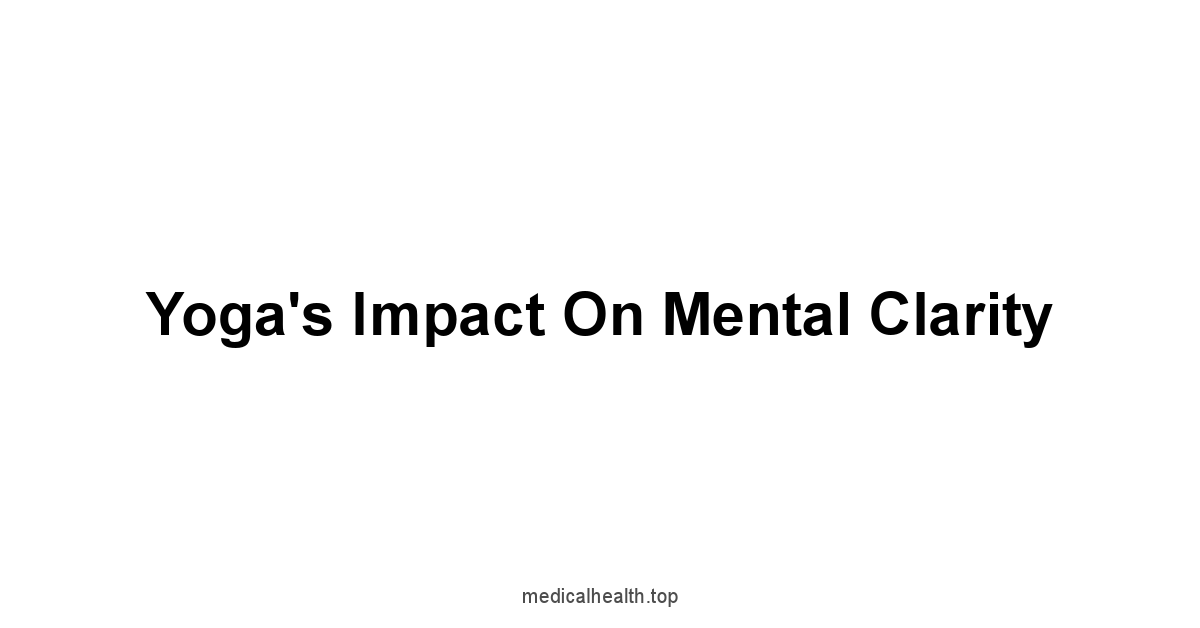
Yoga’s impact extends far beyond the physical, it’s a powerful tool for cultivating mental clarity.
It’s a way to calm the chatter of the mind, to find a stillness that can be elusive in our busy lives.
The physical poses are only one piece of the puzzle.
It’s about weaving together movement, breath, and mindfulness to create a holistic practice that nurtures the entire being.
It’s about more than just working the muscles, it’s about working the mind.
It’s a way to quiet the noise, find a place of calm, and cultivate focus that extends beyond the mat.
This clarity is not about escaping from the world, but about gaining a new perspective on it.
It’s about learning to observe your thoughts and feelings without judgment, to find a sense of inner peace that isn’t dependent on external circumstances.
The practice of yoga helps you to become more aware of your mental state and how your body reacts to the stress and pressure of daily life.
Through mindful movement and breathwork, you develop the ability to manage stress and anxiety more effectively, leading to a greater sense of mental balance.
Yoga provides a space to pause, reflect, and find a deeper sense of connection to yourself.
Calming the Mind Through Movement
The connection between body and mind is undeniable, and yoga harnesses this relationship to promote mental well-being.
The movements in yoga aren’t just physical, they’re also a way to anchor the mind, bringing it to the present moment.
It is when your focus is on the feel of your muscles, the rhythm of your breath, you can effectively push aside the racing thoughts and worries that so often fill our minds.
Each pose, each movement, it’s an invitation to be fully present in your body.
This is more than just an exercise, this is about coming back home to yourself.
The flow of movement in yoga acts like a meditation in motion.
By focusing on the physical sensations, you gently nudge the mind away from the constant analysis and planning that often consumes it.
This mindful movement slows the thinking, calms the overactive mind, and creates space for inner stillness.
It’s about being in the now, noticing the small shifts and adjustments in each movement.
When the mind is quieter, your emotions can be processed with more clarity.
This calm and focus extends beyond the mat, helping you to approach the rest of your day with a more peaceful mindset and more ease.
Meditation and Mindfulness in Yoga Practice
Meditation and mindfulness are integral parts of yoga, going hand in hand with the physical asanas.
Meditation is about training the mind to focus and observe thoughts without getting carried away by them.
It’s about creating a space of quiet in your mind, allowing you to see things with more clarity and less emotional reactivity.
When you sit in meditation, it’s like looking into your inner world, watching thoughts pass by without getting tangled up in them.
It’s not about stopping your mind from thinking, it’s about changing your relationship with your thoughts.
Mindfulness, on the other hand, is the practice of being fully present in each moment.
It’s about noticing the sensations in your body, the rhythm of your breath, and the thoughts that arise without judgment.
It’s about appreciating the simple things, like the feel of your feet on the floor or the warmth of the sun on your skin.
Incorporating mindfulness into your yoga practice enhances the benefits of both movement and meditation, creating a more complete experience.
It’s about bringing the same sense of awareness and presence that you cultivate on the mat into your daily life.
This focus on the present can greatly reduce stress, and make you feel more centered.
Reducing Stress and Anxiety with Yoga
Stress and anxiety can often feel like they are an unavoidable part of modern life.
Yoga offers a way to manage these challenges by working directly with the nervous system.
The combination of mindful movement, breathwork, and meditation can help to shift your body from a state of fight-or-flight to a state of calm and relaxation.
It’s like hitting the reset button for your nervous system, gently coaxing it out of high alert.
When you practice yoga regularly, you are building a capacity to respond to stress with more grace and less reactivity.
The practice of yoga activates the parasympathetic nervous system, often referred to as the “rest and digest” system.
This is what slows your heart rate, lowers blood pressure, and reduces the release of stress hormones like cortisol. It is a natural way to relax the body.
By consciously focusing on your breath and movement, you’re giving your mind something to focus on rather than the anxious thoughts and worries that often fuel stress.
It’s a way to break the cycle of worry, grounding you in the present moment.
The practice is not only beneficial during the session itself, but also extends into your everyday life, making you more resilient and less susceptible to the negative effects of stress.
It’s a natural way to return to a place of calm and centeredness.
Improving Focus and Concentration on the Mat
Focus and concentration are essential for any task, and yoga provides a training ground for these mental skills.
The need to coordinate breath and movement, and the mindfulness required to maintain specific poses, all contribute to improving concentration.
Each yoga pose acts as a small challenge for your mind, helping it to learn to stay on task and not get distracted.
It’s not about being perfect in the pose, it’s about the act of focusing, bringing your attention back when it wanders.
Over time, this translates into better focus and concentration in all aspects of life.
It’s about learning to control your focus, to choose where to place your attention, rather than being controlled by external stimuli.
This sense of focus is not just limited to the mat, it extends into daily activities, making it easier to concentrate at work, during conversations, or while reading a book.
The ability to stay present and focused is a valuable skill that yoga helps you to develop.
It’s about creating a mind that is both sharp and calm, centered and clear.
Yoga’s Benefits for Sleep and Mental Well-being
Quality sleep is essential for mental and physical health, and yoga can significantly improve sleep quality.
The calming effect of yoga, particularly its focus on breath and relaxation, can help to quiet a restless mind and prepare the body for sleep.
A regular yoga practice is not a cure for insomnia, but rather a tool to reduce the stressors that often hinder sleep.
It’s about creating a sense of calm that naturally leads to better rest.
The ability to quiet your mind through yoga is key to a good night’s sleep.
Yoga’s effect on mental well-being is profound.
It’s more than just stress reduction, it’s about creating a more positive and resilient mental state.
The practice helps you cultivate self-awareness, emotional regulation, and a greater sense of inner peace.
The combination of mindfulness, movement, and breath fosters a sense of balance that is essential for overall well-being.
The increased focus and mental clarity that come from a regular yoga practice can improve your mood, reduce symptoms of anxiety and depression, and help you feel more grounded and connected to yourself.
It’s about building a foundation of inner strength that can support you through life’s inevitable challenges.
Specific Yoga Techniques for Flexibility
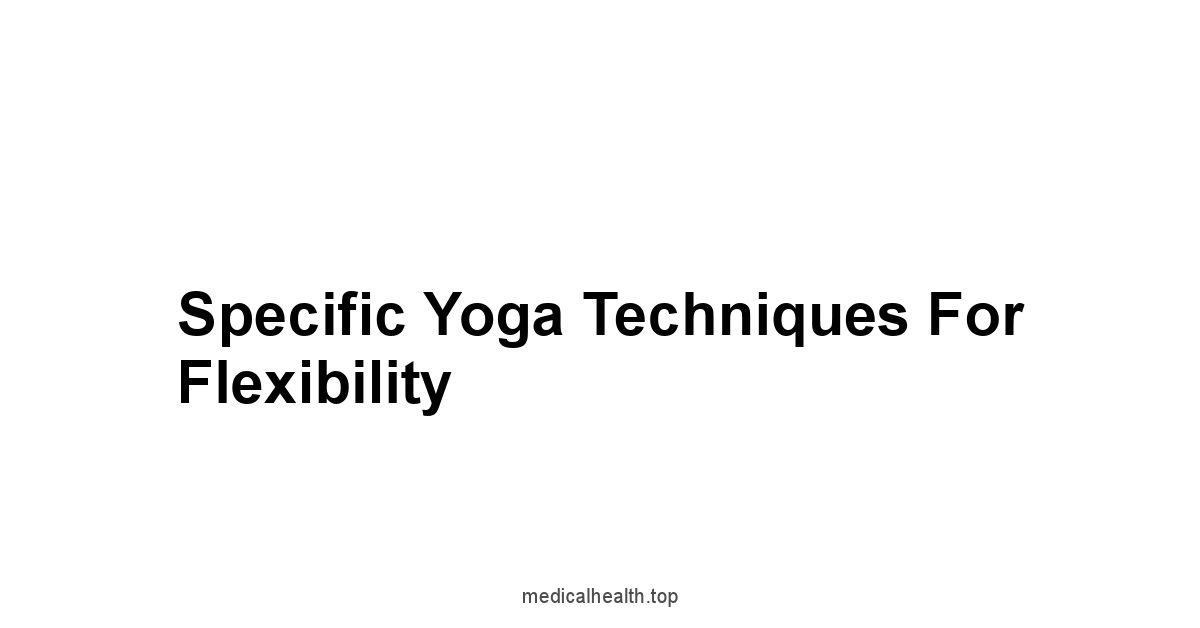
Yoga isn’t a monolithic practice, there are many styles and techniques to explore.
Some are gentler, some are more challenging, and each offers a unique way to work with the body.
It’s about finding what resonates with you, what speaks to your needs and limitations.
The following specific techniques can help improve your flexibility and also enhance your understanding of the practice.
It’s not about doing them perfectly, but about moving with awareness and breath, allowing the body to unfold in its own way.
These techniques are not just about the physical stretch.
They’re also about connecting with the body, listening to the subtle signals, and respecting the limits.
It’s a journey of self-discovery, exploring the body’s potential while remaining grounded and present.
It is about discovering what works for you, and what helps your body in its own unique way.
This is your personal practice, and your personal journey.
Exploring Different Styles of Yoga
Different styles of yoga offer different approaches to flexibility and overall fitness.
Hatha, Vinyasa, and Yin yoga all have something unique to offer:
- Hatha Yoga: This is a foundational style that emphasizes static poses held for longer durations. It’s a great starting point for beginners as it focuses on alignment, breathing, and overall awareness. It’s slower-paced, allowing you to delve deeper into each pose, developing a strong base for your practice, while at the same time promoting flexibility and understanding of each asana.
- Vinyasa Yoga: This style is characterized by its flowing sequences, linking breath to movement. It’s a more dynamic and energetic practice that builds strength, stamina, and flexibility. The continuous flow of poses warms up the body and prepares it for deeper stretches. The Vinyasa style often has many different variations, and you can choose which one fits best with your experience.
- Yin Yoga: This is a slower, more meditative style that focuses on holding poses for longer periods of time, often three to five minutes. It targets the deeper connective tissues, such as fascia, ligaments, and joints. Yin is particularly beneficial for improving flexibility, range of motion, and a feeling of calm. It requires patience and mindfulness, as you will be in an uncomfortable position for longer durations.
- Restorative Yoga: This is a gentle style of yoga that focuses on relaxation and healing. It uses props such as blankets, bolsters, and blocks to support the body, allowing for deep release and relaxation. Restorative yoga is particularly helpful for those with injuries or limited mobility, and it’s great for reducing stress. This is a great complement to any of the other styles of yoga and often is used to end any practice.
Exploring different styles of yoga allows you to find what resonates best with your body and your needs.
Each style offers unique benefits, and by incorporating a variety of styles into your practice, you can achieve a more well-rounded level of flexibility and understanding of your own body.
Sun Salutations for Warm-up and Flexibility
Sun Salutations, or Surya Namaskar, are a series of flowing poses linked together with breath, and are often used as a warm-up, or as an exercise in itself.
The sequence engages every major muscle group in the body, gently warming the body up.
The dynamic movement and the breath-focused practice help to increase circulation, enhance flexibility, and prepare your body for deeper stretches.
It’s a full-body workout all in one, and also serves as a great way to start your day and get the body moving.
Each pose in the Sun Salutation works to improve your flexibility in different ways.
The forward folds stretch your hamstrings, the backbends increase spinal mobility, and the plank position builds core strength.
It’s not just about doing the poses, it’s about moving with intention, focusing on the breath, and allowing the body to flow from one pose to the next.
Sun Salutations are not just a warm-up, they’re also a way to bring mindfulness and movement together, connecting to the rhythm of your body.
They are a great tool for building a foundation of flexibility and strength.
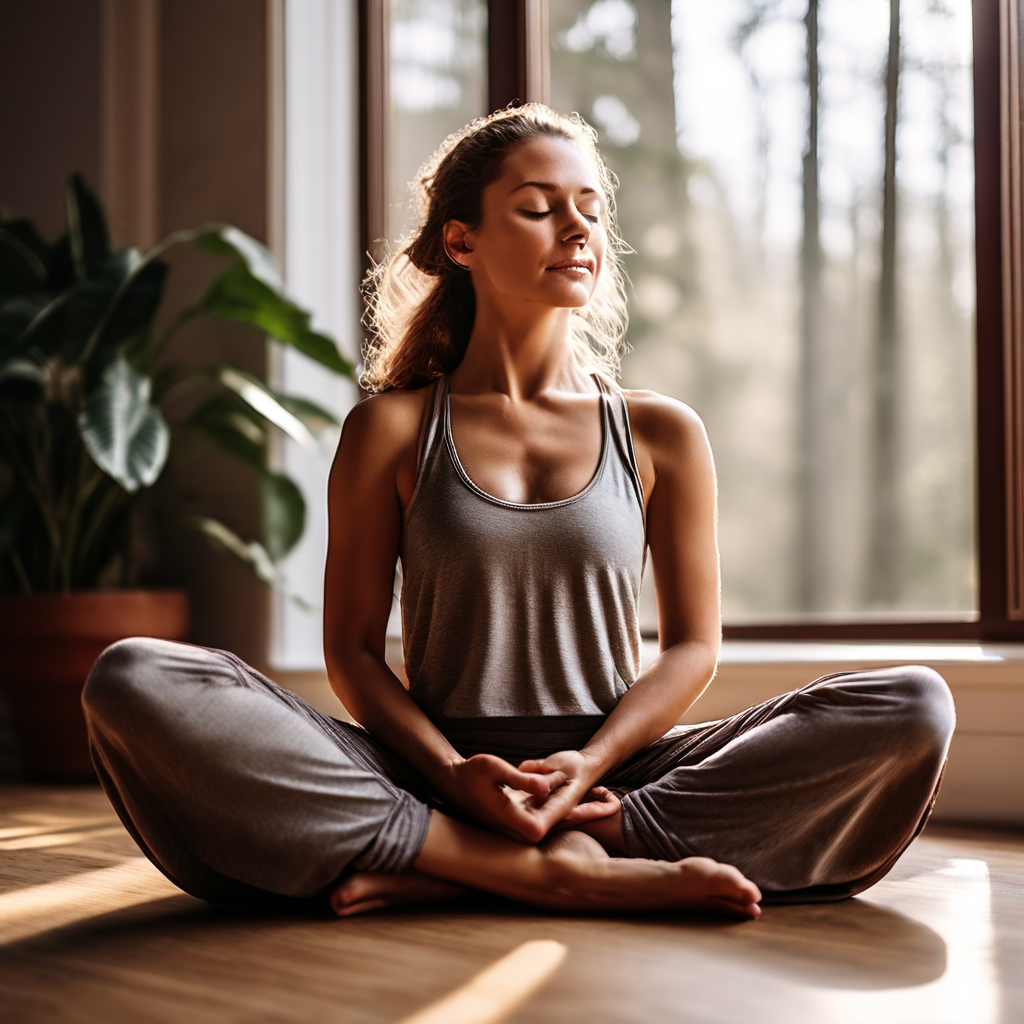
Hip Openers for Increased Mobility
Hip flexibility is crucial for overall mobility and well-being.
Tight hips can contribute to lower back pain, knee problems, and a general feeling of stiffness.
Yoga offers several poses specifically designed to open the hips, improve flexibility, and increase range of motion.
Poses like the pigeon pose, low lunge, and butterfly pose can help to release tension in the hip flexors, the outer hips, and the groin, creating more space and flexibility.
These are important because hips are involved in so many daily activities.
Hip openers are often intense, as they work to release deeply held tension.
It’s important to approach these poses with patience, using your breath to guide you deeper into the stretch.
Start slowly, and never force a stretch, listening to the body’s signals, and backing off when needed.
Over time, consistent practice will lead to increased mobility and a reduction in stiffness.
It’s not just about stretching muscles, it’s about improving overall mobility and making it easier to move through life with more ease.
They are a great addition to any workout or practice.
Forward Folds for Hamstring Length
Hamstrings, which run down the back of your thighs, are often tight.
This can lead to all sorts of issues, including lower back pain and limited mobility.
Forward folds are a key element in any yoga practice, offering a gentle way to lengthen the hamstrings and alleviate tension.
Poses like Seated Forward Fold Paschimottanasana and Standing Forward Fold Uttanasana can help to gradually increase flexibility in this crucial area.
These are both very simple moves that you will find yourself doing often.
It’s important to perform forward folds with intention, using the breath to deepen the stretch and prevent injury.
Bending from the hips, rather than the waist, is crucial for protecting your back.
You will also find that it’s beneficial to bend your knees slightly to avoid putting too much strain on your hamstrings.
The goal is not to touch your toes, it’s about creating space in the back of your legs, and releasing tension in the lower back.
Regular forward folds will gradually lengthen your hamstrings, resulting in more comfort and greater ease of movement.
Backbends for Spinal Flexibility and Strength
Backbends are an important component of any well-rounded practice.
They are not only great for increasing spinal flexibility but also for building strength in the back muscles.
Poses such as Cobra Pose, Bridge Pose, and Wheel Pose can help to open the front of the body, release tension in the spine, and improve posture.
Backbends often feel challenging at first, and it’s important to build up to them gradually, using your breath to guide the stretch.
These are great because a lot of the time our bodies are bent forward when sitting or on our phone, so this is a great practice for the body.
The benefits of backbends extend beyond just flexibility and also help to build a strong core, improve circulation, and boost your energy levels.
It’s not just about bending backward, it’s about opening your heart, letting go of fears, and moving with confidence.
They are important to perform with safety and care, and never pushing beyond your limits.
When done correctly they are an important element of yoga for the health and flexibility of the body.
Specific Yoga Techniques for Mental Clarity

Yoga’s ability to promote mental clarity extends beyond the physical postures.
Specific techniques that focus on breath, meditation, and visualization are also crucial elements in the practice.
These practices help you to quiet the mind, calm the nervous system, and cultivate a greater sense of inner peace.
They’re like finely tuned instruments for the mind, capable of shifting your mental state to one of greater focus and tranquility.
These are not just extra steps, they’re essential to the overall mental benefits of yoga.
These techniques are not about achieving some perfect state of mind, they’re about developing awareness, cultivating a relationship with your thoughts, and finding a more grounded sense of self.
It’s about building the skills to manage your thoughts and emotions with grace and patience.
Each of these techniques offers a unique path toward mental clarity and focus.
Pranayama Techniques for Breath Control
Pranayama, or breath control, is a core element of yoga, and its benefits for mental clarity are immense.
These techniques are about more than just breathing, they’re about actively controlling and directing the flow of energy in the body.
Specific breathing exercises like Ujjayi breath, alternate nostril breathing, and Bhramari breath can help to calm the mind, reduce anxiety, and increase focus.
When you consciously control your breath, you have a direct impact on your nervous system.
The breath is the body’s most basic function, and is often forgotten.
- Ujjayi Breath: This breathing technique involves slightly constricting the throat while inhaling and exhaling through the nose, creating a soft, ocean-like sound. This breath can help you to find focus and to keep you centered during your practice.
- Alternate Nostril Breathing Nadi Shodhana: This practice involves breathing through one nostril while blocking the other. It is great for balancing the left and right hemispheres of the brain, calming the nervous system, and promoting mental clarity.
- Bhramari Breath: Also known as the “humming bee breath,” this technique involves closing your eyes and ears, and making a humming sound during the exhale. This breath helps to relieve tension, reduce anxiety, and improve focus.
These pranayama techniques offer a powerful tool for improving your mental clarity.
They can be used throughout the day, whenever you need to calm your mind or reduce stress.
Regular practice will greatly improve your ability to manage your thoughts and emotions.
These are often great to use when starting your practice, and to set yourself up for a positive session.
Guided Meditation for Focus and Relaxation
Guided meditation can be a valuable tool for those who find it difficult to quiet their minds on their own.
In guided meditation, a teacher or recording leads you through a meditation practice, often using imagery, affirmations, or specific breathing techniques.
It’s a way to gently direct your focus, allowing you to ease into a more relaxed state.
When you’re listening to a voice, it can take the pressure off of having to find that inner quiet yourself.
Guided meditation is often a great option for those who are new to meditation, or those who find it hard to find focus by themselves.
Guided meditations can be customized for specific purposes such as stress relief, emotional healing, or simply relaxation.
The consistent practice of guided meditation can improve your ability to concentrate, reduce anxiety, and enhance overall mental well-being.
It’s about developing a stronger connection to your inner self, and finding a way to navigate your mental world with greater ease.
Visualization Techniques
Visualization techniques can also be a powerful tool for enhancing mental clarity and focus.
In this type of practice, you create mental images to enhance the benefits of your yoga practice.
You could visualize yourself performing a pose perfectly, or imagine a peaceful scene to promote calmness.
Visualization uses the mind’s power to manifest or bring about these positive outcomes.
By using the mind in this way, you can deepen your focus, calm your anxiety, and even improve your physical performance.
These techniques can be used in any yoga practice or meditation, adding an extra layer to your practice.
It is a great way to work with your brain and develop a more peaceful inner world.
This tool is great for manifestation, and for visualizing positive outcomes, and can be used in many areas of life outside of the yoga mat.
Mantra Chanting for Concentration
Mantra chanting is a practice that uses repetitive sounds or phrases to focus the mind.
It’s an ancient technique that has been used for centuries to promote concentration, and to create inner peace.
The act of chanting, either out loud or silently, can bring a sense of calm, and allows you to anchor the mind.
It’s not just about the sounds, it’s about the focused intention you bring to the practice.
These sounds can have very deep roots and meanings that can help you connect to something bigger.
Chanting can be a helpful way to reduce the mental chatter that often accompanies anxiety.
By focusing on a specific word or phrase, the mind is able to quiet and concentrate.
The repetitive sound also has a calming effect, reducing stress and promoting a sense of inner peace.
When you introduce mantra chanting into your yoga practice, you’ll find that it is a powerful tool for both focus and relaxation.
This technique provides an alternative to simply quieting the mind, instead, giving it a positive area to focus on.
Savasana and Restorative Poses
Savasana, or corpse pose, is a crucial component of every yoga practice.
This is not just a time to lie down and rest, but it’s a practice in itself, an opportunity to fully integrate the benefits of your practice.
It involves lying on your back, with your arms and legs relaxed, and your mind at peace. The key is to remain still and simply be present.
This practice allows your muscles to relax, your nervous system to calm, and your mind to be at rest. It is the culmination of your practice.
Restorative poses, like Savasana, are passive stretches that allow the body to fully relax.
They often use props, such as blankets and bolsters, to support the body and minimize any discomfort.
These poses help to release any remaining tension from your practice, and to create a sense of calm and peace.
They are a way to nurture your body and mind, providing the opportunity to gently restore.
When you use these passive stretches with deep breathing you’ll find that your mind can quiet and your body can feel light.
These are important practices that will leave you feeling rested and grounded.
Integrating Yoga into Your Daily Routine
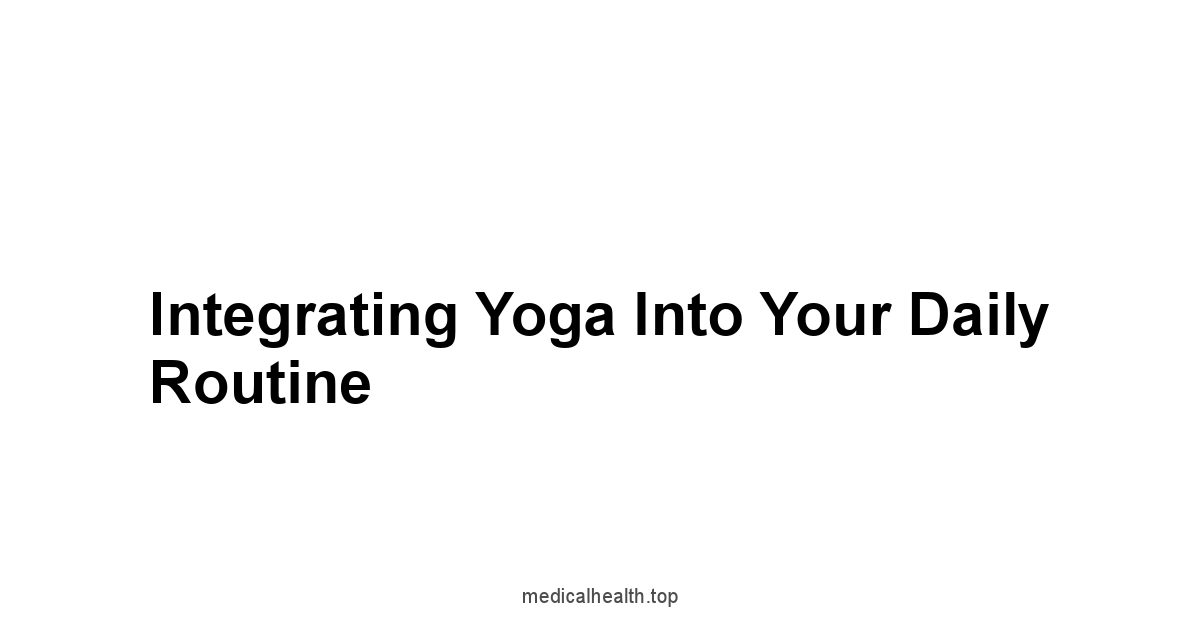
Yoga is not something you do only on the mat, it’s a way of being that can be integrated into your daily routine.
It’s about finding small moments to practice mindfulness, to connect with your breath, and to move your body with intention.
Consistency is key for building flexibility and cultivating mental clarity.
It’s about taking what you learn on the mat and applying it to your daily life, and this is the very last step in building a true practice.
It’s not about having to practice for hours each day, but about finding small ways to incorporate yoga into your life, whatever that means for you.
Even just a few minutes of mindful stretching or breathing can make a significant difference.
It’s about bringing the same sense of awareness and presence that you cultivate on the mat into your interactions with others.
It’s a journey, not a destination, and consistency is key.
Starting Slowly and Progressing Gradually
It’s crucial to begin a yoga practice slowly and gradually, and to not rush into anything. You’re not in a race.
Start with a few poses you are comfortable with, and try to learn each of them well before moving on.
The goal is not to push yourself to the limit, but to gently and consistently build strength, flexibility, and awareness.
Don’t worry about what others are doing around you, this is your time and your practice.
Start with short sessions, and slowly increase the length of your practice as your body adapts.
It is also important to respect your body’s limitations, and never push yourself into a painful position.
This is not an area where you want to push your body too far.
It’s more important to move with intention, and to focus on your breath.
When you start this way, you’ll be setting yourself up for success in the long run.
This method also helps you avoid any unnecessary strain or injury.
Choosing a Practice That Fits Your Needs
There are many different styles of yoga, so it’s important to choose a practice that best suits your needs and preferences.
If you’re looking for a more physically challenging practice, styles like Vinyasa or Ashtanga may be a good fit.
If you prefer a slower, more meditative practice, styles like Hatha or Yin yoga might be more suitable.
It’s about finding what you enjoy, and what feels good for your body and mind.
Finding the practice that works for you will help you in your journey.
Also consider what time of the day is best for you.
Some people prefer to practice yoga in the morning to energize their body, while others prefer to practice in the evening to relax their mind before bed.
Try out different styles and times to see what works best for you and your needs.
It’s important to remember that your practice is personal and unique to you.
Don’t compare yourself to others, and simply follow what feels right in your body.
Finding a Yoga Class or Online Resource
When you’re starting a yoga practice, it can be helpful to seek guidance from an experienced teacher.
You can join a local yoga class, or utilize online resources, such as apps and websites, to begin a practice.
When you find a teacher or class that resonates with you, this can provide the support, motivation, and structure you need to stay consistent.
When you’re learning, a teacher can help make sure that your form is correct, and that you’re moving in a way that works for your body.
Online resources also offer a great way to practice yoga in your own time and space.
You can find a wide variety of classes and tutorials online, catering to different levels and interests.
It’s often a great choice for beginners, or those who find it hard to attend studio classes.
Whatever route you choose, try to find resources that inspire you and that fit with your lifestyle, and that can lead to you finding consistent success.
The key here is to keep practicing and keep moving forward.
Creating a Home Yoga Practice
Creating a home yoga practice is a great way to integrate yoga into your daily routine, and it allows for more flexibility and personalization.
When you have your own dedicated space, it’s easier to practice whenever you have the time and the need.
To set up a home practice, create a space that feels calm and peaceful.
Use a yoga mat, and gather any props you might need, such as blocks or straps.
Having a designated area that is just for this will also help you commit to it.
Start by setting small, achievable goals for your home practice.
Begin with a few basic poses that you’re comfortable with, and then gradually expand your practice as you gain more confidence.
You can follow a guided meditation online or use a sequence you’ve learned in class.
It’s about creating a routine that works for you and that helps you to stay consistent.
This practice also allows you to deepen your connection to your body, and learn more about your practice overall.
Maintaining Consistency for Long-term Results
The real benefits of yoga are seen with consistency.
It’s not about doing one intense session and then stopping for weeks, it’s about showing up regularly, even when you don’t feel like it.
Consistency is what allows your flexibility to improve, and what allows you to find a stable mental space.
It’s about making yoga a part of your lifestyle, not just a workout.
It is often the small steps you take that make the biggest difference.
To stay consistent, find a time that works best for you and stick with it.
You can set a specific time every day or week to dedicate to yoga practice.
The key is to make it a routine, and to make it easy to stick with.
Remember that it’s okay to miss a day or two, but the most important thing is to keep showing up and keep working at your own pace.
It’s about being patient with yourself and celebrating each small step you take along the way.
The long term benefits that come with a yoga practice are well worth the effort and time.
Final Thoughts
Yoga, it’s not a quick fix, but a slow, steady climb.
It’s about finding that balance, not just in the poses, but within your own mind.
The journey of flexibility isn’t about pushing harder, but understanding your body and moving within its own unique bounds.
You learn to listen, to feel, and to respond with kindness.
It’s a process that asks for patience, not force, and the rewards, a more open body and mind, are worth the effort, it’s like discovering a new path inside yourself.
And as you move more freely, you find that your mental state often starts to follow suit.
The focus that you cultivate on the mat, it’s not just a trick to maintain a pose, it’s a skill that bleeds into the rest of your life.
It helps you navigate stress with more grace, quiet the mental chatter, and come back to the present moment, and there’s data to prove this.
Studies from the National Institutes of Health have shown that regular yoga practice can help reduce symptoms of anxiety and depression.
It’s about learning to observe your thoughts like clouds passing by, without getting caught up in them.
This is where the true value lies: a mind that is calmer, more centered, and ready to face the world.
It’s important to remember that each practice is your own, your personal journey.
There are many styles and methods, all with their own unique qualities, it’s not a race, or something to compare to others. Explore each, and find what works best for you.
You might find that Vinyasa brings you energy, while Yin connects you with a meditative calm.
Some enjoy the flow of Sun Salutations while others prefer the grounding of hip openers.
Let the breath guide you and be your constant companion. It’s about finding your own rhythm.
So, as you go about your days, don’t just think of yoga as something to do on the mat, but rather, as a way of living.
Bring that same awareness into your interactions, into every step you take, every breath you draw.
When you meet your body where it is, with acceptance and respect, you also start to treat yourself in a new light, and begin to take the lessons learned out in the world.
The practice is a gift, one that you give yourself each day.
It’s there to serve you, to improve you, and to lead you to a happier and more fulfilling life.
Frequently Asked Questions
Can yoga really make me more flexible?
Yes, yoga can make you more flexible.
It’s not about being a contortionist, but about consistent effort.
You work on your body, gently pushing, and with time, you become more flexible.
It’s like coaxing a stubborn door open, not kicking it down.
I’m very stiff, can I still do yoga?
Being stiff isn’t a problem, it’s where you start. Yoga is about meeting your body where it is.
You listen to its signals, and you respect your limitations.
It’s about working with what you have and progressing slowly. Everyone starts somewhere.
How long before I notice a change in flexibility?
Patience is key. You won’t become a pretzel overnight.
It takes consistent practice, not just one hard session.
You start seeing changes slowly, little by little, and that’s the way it works. It’s not a race, it’s a journey.
What are some good yoga poses to start with?
Start with the basics: Downward-Facing Dog, Triangle Pose, Seated Forward Fold, Pigeon Pose, and Cobra Pose.
These poses help you learn how to move your body in different ways.
They are the foundational pieces of a lot of other moves, so they are a great place to begin.
Is breath really that important in yoga?
Breath is like the motor to your car. It’s what makes everything work.
In yoga, the breath guides you into each pose and allows for the stretch.
It’s not just breathing, it’s the very fuel of your practice.
It calms the mind, deepens the stretches, and grounds you in your body.
Can yoga really calm my mind?
Yes, it can.
It’s not just about stretching muscles, it’s about untangling the knots in your mind.
The focus on movement, the steady breath, and the quiet poses all combine to create a sense of calm.
It’s about finding stillness in the chaos of daily life.
I’m always stressed, will yoga help me?
Yoga can help you manage stress and anxiety.
The practice gets your nervous system to move to a state of rest and calm, allowing your body to break the stress cycle.
You’re learning to respond to stress with more ease, which carries into your daily life.
How does yoga improve mental clarity?
Yoga is about focus.
You learn to focus on your movement, on your breath, and on the poses.
This focus will help you filter out distractions, and it translates to greater clarity in your daily life.
A clear mind will make every task that much easier to face.
What’s the best style of yoga for flexibility?
Each style of yoga offers something different.
Hatha is great for building a solid base, Vinyasa is a bit more dynamic and fluid, and Yin is slow and deep.
Try different styles, and find what fits your needs and limitations.
It is important to find the style that works with your body.
How can I fit yoga into my busy day?
You don’t need to be on the mat for hours to benefit.
Even a few minutes of stretching or focused breathing can make a difference.
It’s about integrating yoga into your life and taking small consistent actions.
You can’t do it all in one shot, it will take time to find the space you need.


